 Your new post is loading...
 Your new post is loading...

|
Scooped by
Jeff Domansky
December 16, 2015 2:57 AM
|
Nuance, the company responsible for the speech recognition softwareDragon, is announcing Nuance Mix, a developer platform that will allow anyone to add natural language detection to an app.
The aim of Nuance Mix is the Internet of Things. It has the same technology that powers other Nuance products, and comes with voice recognition and text-to-speech tools. Developers can even create custom voice models that can be dedicated for defined tasks....
In an attempt to modernize the retail experience for sellers, four Nest alums are launching b8ta, a software-driven brick-and-mortar store in Palo Alto, to sell Internet of Things gadgets and products on Friday. The entire b8ta experience is technology-driven — from the way companies get their products into b8ta to the way customers interact with the products.
With b8ta, the goal is to get innovative products like the Gi Flybike, a folding electric bicycle, and Thync, a wearable for achieving mindfulness and boosting energy, into physical stores and enable customers to have real, tactile experiences with them....
The Internet of Things will be made up of many things that are constantly on the move.
Many of the connected objects will be stationary, of course, and a lot of those already are being put in place.
There are the obvious smart objects, such as connected thermostats at home and beacons in stores.
And then there are some that are not so obvious, such as the 100 Los Angeles street lights with Wi-Fi built in and the small cells inside manhole covers in Zurich that are linked to the landline infrastructure....

|
Scooped by
Jeff Domansky
December 7, 2015 11:46 AM
|
New York based startup Shiftwear has developed top notch sneakers that can change the color and pattern through a mobile app. These shoes are fitted with curved, flexible screen with HD displays that showcase your custom patterns and animations.
These sneakers will be wirelessly connected to your smartphone via an app and will be supported on the all operating system like iOS, Android and Windows. Through this app you will be able to create custom static designs or illuminate the screen with amazing animations....

|
Scooped by
Jeff Domansky
December 4, 2015 12:39 AM
|
The number of wearable devices is growing, by a lot.The number of fitness trackers and smartwatches shipped around the world in the last quarter is about double the number shipped a year ago, according to the latest IDC Tracker report.
Leading the category are fitness trackers by Fitbit followed by the Apple Watch.
While there’s clear growth in the number of wearables, there doesn’t seem to by any cannibalization of the market, since fitness trackers and smartwatches both grew in scope.
A total of 21 million wearable devices shipped last quarter, an increase of 198% from the same quarter last year. Of those, 5 million were Fitbit devices and 4 million were Apple watches....

|
Scooped by
Jeff Domansky
November 26, 2015 11:07 PM
|
Swatch Group Chief Executive Nick Hayek has signed a contract with credit card company Visa Inc.in connection with the Swiss firm’s new watch that enables wearers to make payments, a newspaper reported on Tuesday.
Swatch has already introduced the watch in China and aims to introduce a similar device in 2016 in Switzerland and the United States, Le Temps said.
In China Swatch has partnered with China UnionPay. Hayek confirmed he has signed a contract with Visa for elsewhere. That covers Switzerland and the United States, the paper said....

|
Scooped by
Jeff Domansky
November 24, 2015 1:10 AM
|
The promise of IoT is "smart" everything. Nest's Internet-connected Learning thermostat, Nest Cam surveillance camera, and Protect networked smoke alarm promise a more energy-efficient, safer home. IoT technology is a key part of the pitch for "smart cities," "smart buildings," "smart factories," and just about every other "smart" proposal from sensor manufacturers, networking companies, and big technology consultancies. Seemingly everyone is looking for a piece of the biggest potential collection of integration projects ever. Sometimes the "smart" is relatively close to the sensor itself, but it often relies on a remote cloud service or data center to process the information and control actions.
On the consumer side, while devices like Nest's get much of the attention, wearable IoT devices are just starting to take off—despite the relatively low impact so far of high-profile efforts like the Apple Watch. "The Apple Watch may be on a slower liftoff cycle than other recent Apple hardware launches, but it has a complex number of use cases which are finding their home, purpose, and meaning," said Mark Curtis, the chief client officer at Fjord, Accenture's design consultancy. Within the next two to three years, he predicted, wrist-based devices will lose the need to be tethered to a smartphone. "At the same time, interactions between wearables and nearables (e.g., beacons, Amazon Echo, connected cars) will grow."
The health field is the most immediate fit for wearables, because they can gather data that has a benefit without conscious human action. "A good example is our Fjord Fido diabetes platform," Curtis said. "It requires complex linking between devices and data but would not have been possible without a smartwatch."...

|
Scooped by
Jeff Domansky
November 15, 2015 4:10 AM
|
There’s a movement taking place, says Tech Republic – and it’s focused on wearables and their use in the enterprise. More than 93% of companies participating in a recent APX Labs survey reported that they are evaluating wearable technology, and 87% believe that it will have a significant impact across their industry within the next five years.
“The invisible revolution that is underway is bigger than we thought it was,” said Brian Ballard, CEO and co-founder of APX Labs, the developer of the Skylight platform for enterprise wearable technology.
The purpose of the survey was to see who is using or evaluating wearables, and what they are interested in. Wearable technology is growing, with Gartner reporting smart glasses will result in $1 billion annual cost savings in the field services industry alone, and IMS Research estimating the wearable technology marketplace will grow to $6 billion by 2016....

|
Scooped by
Jeff Domansky
November 8, 2015 2:46 AM
|
The US smart home market has yet to take off. Quirky's recent announcement that it was filing chapter 11 bankruptcy — and selling off its smart home business, Wink — highlights this well.
At its current state, we believe the smart home market is stuck in the 'chasm' of the technology adoption curve, in which it is struggling to surpass the early-adopter phase and move to the mass-market phase of adoption.
There are many barriers preventing mass-market smart home adoption: high device prices, limited consumer demand and long device replacement cycles. However, the largest barrier is the technological fragmentation of the smart home ecosystem, in which consumers need multiple networking devices, apps and more to build and run their smart home....
Marketers would love to know what's going on inside your head when you watch their commercials — and now they can find out, thanks to a technique called neuromarketing.
Brainsights is a Toronto company that specializes in scanning people's brainwaves in order to see if they're responding to companies' messages and content, whether they're emotionally engaged, and whether they'll remember any of it."
For advertisers, for anybody in communications, this is kind of a holy trinity," said Dan Iwasa-Madge, the company's head of products and analysis during a presentation at the Wearable Entertainment and Sportsconference in Toronto Tuesday....

|
Scooped by
Jeff Domansky
October 29, 2015 10:47 AM
|
The next several years will continue to see double-digit growth in the number of Americans using wearable devices, according to eMarketer's first wearables forecast. In 2015, 39.5 million US adults 18 and over will use wearables, including smartwatches and fitness trackers. That's a jump of 57.7% over 2014. While penetration among US adults is just 16.0% this year, eMarketer expects that to double by 2018, to 81.7 million users.
eMarketer defines wearable users as those who wear accessories or clothing at least once per month that are embedded with internet-connected electronics and exchange data with a manufacturer or other connected device.
Wearables are currently most popular among US adults between 25 and 44, who are the most involved in the movement toward data and fitness tracking. In 2015, 25.1% of internet users between 25 and 34 and 23.1% of those between 35 and 44 will use one. By 2018, 49.9% of 25- to 34-year-old internet users and 47.0% of 35- to 44-year-old internet users will use a wearable device.
Long-term, older Americans are expected to be a bigger growth driver, as more wearable health monitoring devices hit the market. Throughout the forecast period, US adults 65 and older will see the biggest growth rates every year for wearable adoption....

|
Scooped by
Jeff Domansky
October 28, 2015 2:33 PM
|
We've discussed at length that companies rushing to embrace the "Internet of Things" (read: networked devices for those of us not in marketing) tend to have completely forgotten a little something called device security. As a result we're now bombarded week after week with stories about cars that can be controlled remotely, televisions that share your unencrypted living room conversations with anybody on the Internet, and refrigerators that leave the door wide open to having your e-mail password stolen. Some of these are kind of cute exploits, but many of them could be potentially fatal.
While these companies are desperately trying to highlight the wonderful future of Internet connected devices, they've inadvertently been creating advertisements for why many devices should just remain stupid. Especially if you're going to cut corners in development so device security is an afterthought, or cut corners post release when it comes to quickly identifying and patching exploits.
The latest case in point: the $150 iKettle by UK company Smarter promises to save its users "two days a year in wasted waiting time" over traditional tea kettles. How? Users can remotely turn the kettle on from anywhere via smartphone app, potentially letting users walk into the house just as the kettle comes to a boil. Avoiding the horrible task of having to walk a few feet and wait a few minutes is the pinnacle of modern engineering to be sure; the problem is that for the better part of this year researchers have been noting that the security on the kettle was virtually nonexistent...

|
Scooped by
Jeff Domansky
October 28, 2015 2:20 PM
|
Over the next six months, 4% of IoT adopters will decrease the number of projects they start, according to a new study. But over the next 12 months, there will be an increase of 12% in projects started.
The study was conducted by the IoT M2M Council (IMC) and comprised a quarterly survey of 140 executives that self-identify as buyers of products and services for the Internet of Things.
Part of the reason some companies may be slowing the pace of IoT projects is the complexity they either experienced or witnessed in previous projects.
For example, almost all (96%) of those involved in IoT projects say they face challenges in one form or another, as I wrote about here recently (96% Challenged by IoT Projects, 42% Targeting Consumers)....
|

|
Scooped by
Jeff Domansky
December 16, 2015 2:49 AM
|
Forecasts for the future number of connected wearable devices continue to top each other, and the latest report continues that trend.
Shipments of connected wearables reached 73 million this year, according to a new study by Berg Insight.
But that’s nothing compared to what’s coming. By 2020, there will be 228 million connected wearables shipped, according to Berg....
The Internet of Things (IoT) refers to a phenomenon and an entity. It refers to the way Internet connectivity has expanded to include everyday objects and to how those everyday objects interoperate with our daily lives.
No longer do we “access” the Internet. The Internet is ever-present. It operates as an automated entity that can carry out functions that reflect and affect the physical world. We conduct business, live our lives, and dictate our affairs in its presence and based on its rules. Anything from your refrigerator to your key fob could be connected.
Forbes contributor Jacob Morgan wrote,
"If it has an on and off switch then chances are it can be a part of the IoT."
Increasingly, however, IoT devices may not even have an on/off switch.
In the wake of this ubiquity, massive implications exist for policy, safety, government, regulation, privacy, provision, and technology....

|
Scooped by
Jeff Domansky
December 8, 2015 2:11 AM
|
Among tech buzzwords, Internet of Things is currently one of the favorites ( Big Data is up there too). But the Internet of Things or IoT is not really an industry and is more of a theme with IoT companies attacking a wide variety of industry challenges. We put together a map of IoT startups that are attacking different industries.
While companies like Lockitron andCanary aim to automate your home, Proteus Digital Health and AdhereTech are trying to revolutionize medicine by improving patient monitoring. Below are some of the areas that IoT startups are attacking with a small sampling of companies for each IoT segment.

|
Scooped by
Jeff Domansky
December 4, 2015 1:21 AM
|
From fancy door locks to sprinkler systems, Denver-area companies are figuring out new ways to live smarter with the Internet by making things. Lots of things. The Internet of Things is a trend to build Internet connections into everyday objects to help people track and control those objects.
Common IoT devices include light bulbs, watches and home thermostats such as Nest. There's even a new home-grown IoT community called TechRiot, backed by Arrow Electronics and the Innovation Pavilion in Centennial. What started as a meeting among interested IoT developers in July has grown to more than 1,000 members.
That just gives us more gift options. If you're shopping local this year, here is a roundup of Internet-friendly products from local IoT companies...

|
Scooped by
Jeff Domansky
November 29, 2015 4:38 PM
|
Get ready for the Google Monocle. The U.S. Patent and Trademark Office has granted a new patent to Google for a potential upcoming version of Google Glass. The best way to put it is that it doesn’t look like a pair of glasses anymore — it’s a glorious monocle that wraps around your head.
Here’s an abstract from the patent:
The band is adjustable such that it can be configured by a user to contact the head of the user at a first location near a temple, a second location along a portion of the user’s ear adjacent the temple, and at a third location along a rear position of the head of the user.
Once you configure it, Glass should retain its configuration. The question is whether this will be enough to revive interest for this device....

|
Scooped by
Jeff Domansky
November 24, 2015 11:48 PM
|
When times change, the time keepers must change too.
With its watch business facing sluggish growth and new buyers turning to connected wearables, the four-decade-old Titan Co. Ltd on Monday said it will launch a range of smart watches along with HP Inc.
The new watches will arrive in select domestic and international markets in the next couple of months.
The entry into the smartwatch category is the next step in Titan’s journey as a lifestyle company, said S. Ravi Kant, chief executive at the company’s watches and accessories division.
Traditional watchmakers across the globe are stepping up to the challenge as technology giants such as Apple Inc. and Samsung Group carve out a new category of smart watches. Watch manufacturer Fossil reportedly spent $260 million to acquire Misfit, maker of wearables and Internet-connected devices.

|
Scooped by
Jeff Domansky
November 21, 2015 2:19 AM
|
For a business to tap into the potential of The Internet of Things is going to require some buy-in from those at the top.
If a new study of one group of business leaders is any indication of the IoT state of adoption, some have a ways to go.
It turns out that the majority of top execs in Canada are not even aware of The Internet of Things.Most (53%) executives said they are completely unaware of the Internet of Things and even more (72%) find it to be a confusing concept....
Wearable technology has moved beyond fancy prototypes and firmly established itself as an evolving product category. Nowadays, wearable technology is becoming more common and companies have started creating a steady stream of new devices that can be worn on the wrist, head, eyes and body for communication. Here is a glimpse of newbie and most effective wearable gadgets with their potential applications....
The wearables industry has cooled off in 2015, with deals and funding down from last year, but a few dozen startups have carved out a place for themselves in certain industries and are taking on established players. We used CB Insights data to identify 42 startups attacking fitness, apparel, healthcare, to name just a few of the areas. We mapped out the startups — one-fourth of them early-stage companies — in the graphic shown below. ...
Asia Pacific was home to 34% of the worlds, connected wearables last year. It is estimated that by 2025, the global wearable technology market will be worth some 70 billion U.S. dollars. So far, fitness and health related functions are dominating the space, as well as devices that can form linkage to functions currently available in a Smartphone, such as GPS. But is this just a playground for the big tech companies and early adopters? Or is this a significant shift in the way we will lead our lives?
The key question this piece of market research aims to discover, is whether or not we actually know our consumers well enough, in terms of their acceptance and expectations of such products. Are consumers in Asia Pacific playing catch up, or are they actually leading this trend in consumer wearable technology? How can marketers and manufacturers succeed in this area?...

|
Scooped by
Jeff Domansky
October 28, 2015 2:38 PM
|
A security man has mapped and hacked insecure connected kettles across London, proving they can leak WiFi passwords.
The iKettle is designed to save users precious seconds spent waiting for water to boil by allowing the kitchen staple to be turned on using a smartphone app.
Pen Test Partners bod Ken Munro says hackers can make more than a cuppa, however: armed with some social engineering data, a directional antenna, and some networking gear they can "easily" cause the iKettle to spew WiFi passwords.
"If you haven’t configured the kettle, it’s trivially easy for hackers to find your house and take over your kettle," Munro says. "Attackers will need to setup a malicious network with the same SSID but with a stronger signal that the iKettle connects to before sending a disassociation packet that will cause the device to drop its wireless link....

|
Scooped by
Jeff Domansky
October 28, 2015 2:29 PM
|
But the success metrics are but one of the challenges of IoT implementation. Almost all (96%) of those involved in IoT projects say they face challenges in one form or another.
The challenges range from policies to issues with the actual technology. For any of you involved in IoT projects, this list of challenges from those already involved in IoT may sound familiar:
58% -- Business processes or policies, such as privacy issues
51% -- User adoption of new technology
41% -- Timely collection and analysis of data
40% -- Sensors or devices....
|



 Your new post is loading...
Your new post is loading...






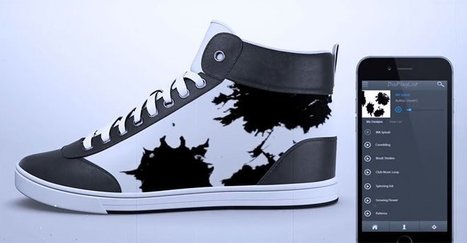
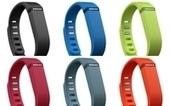


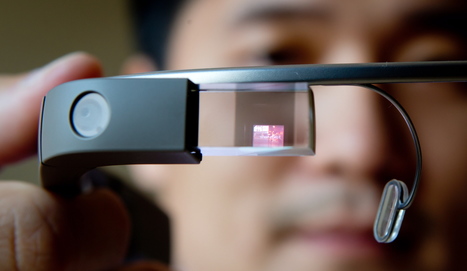

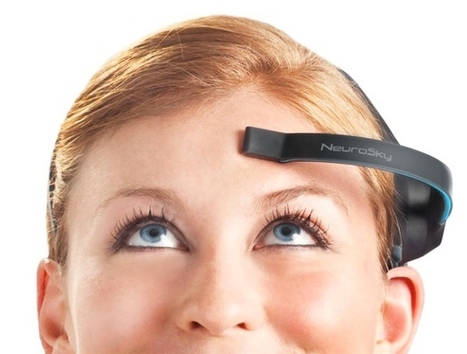







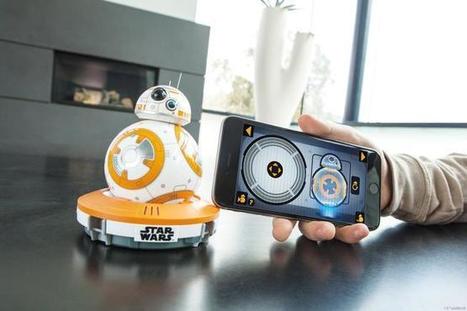
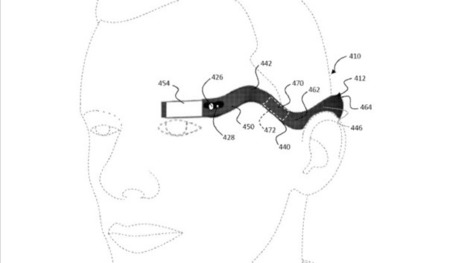
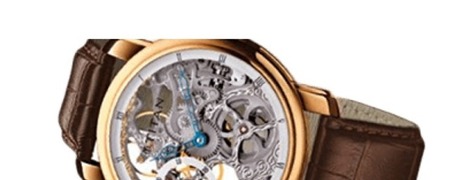


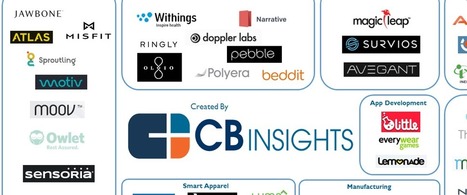










Nuance now has a developer program to bring voice control to the Internet of Things.